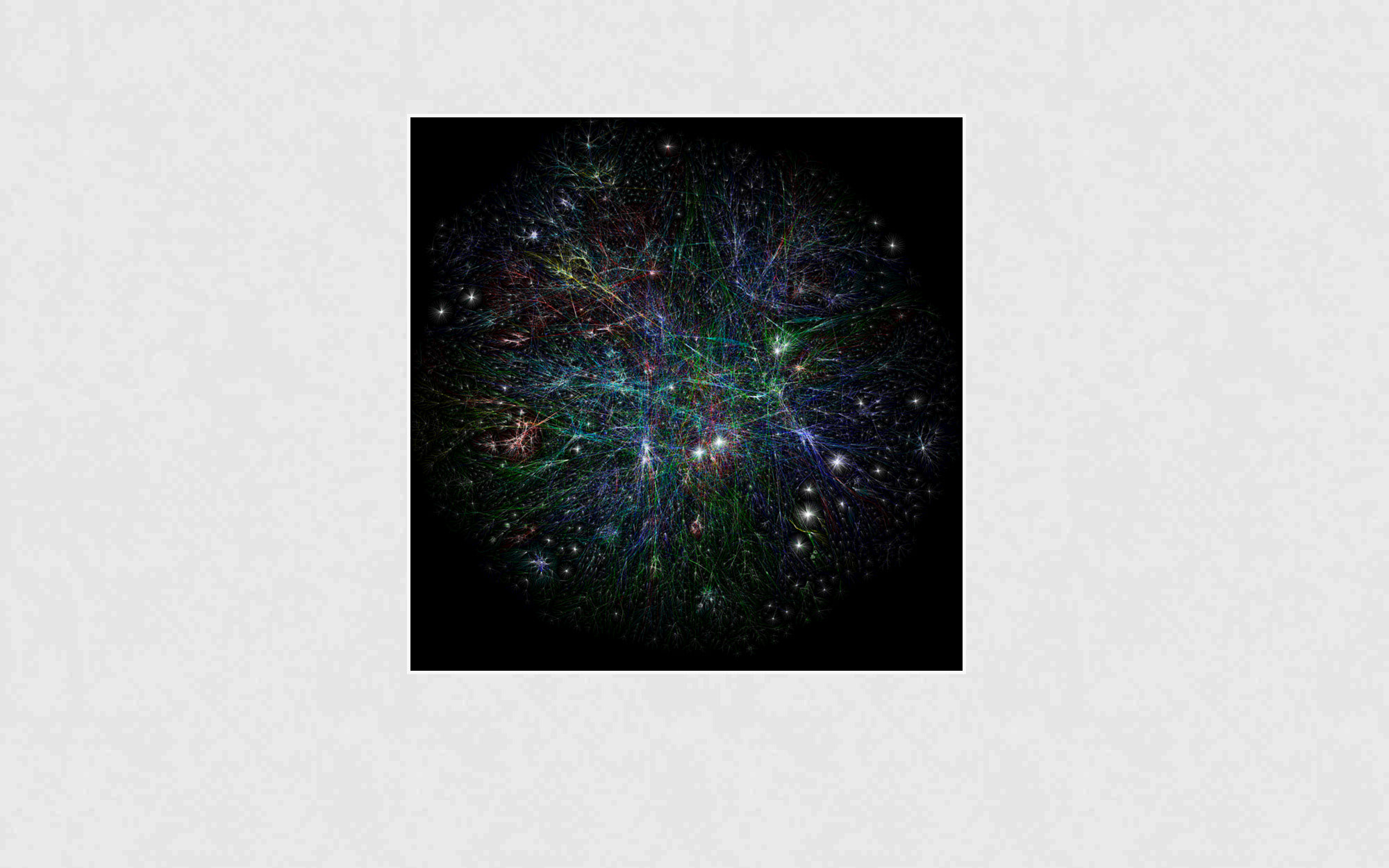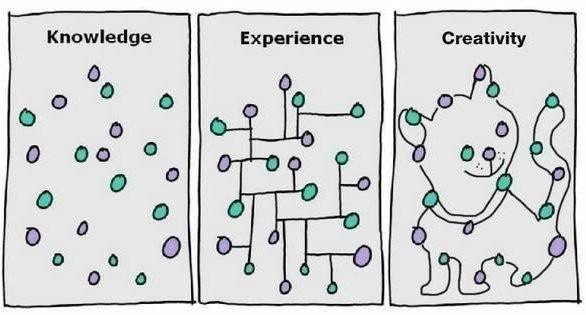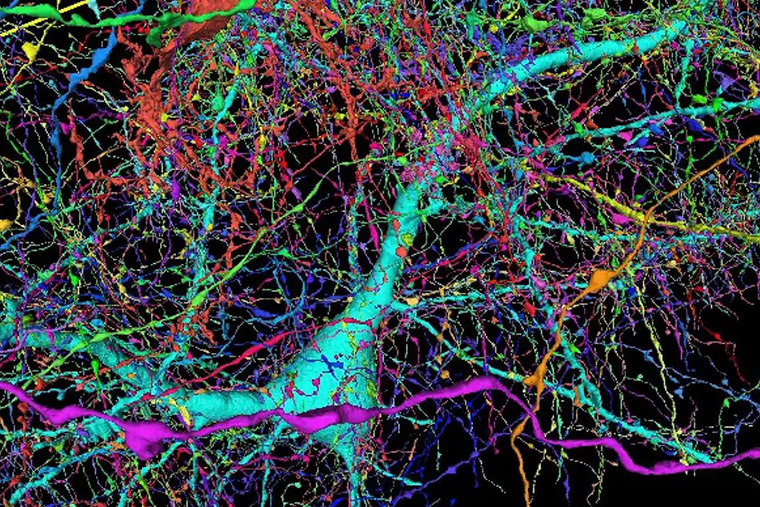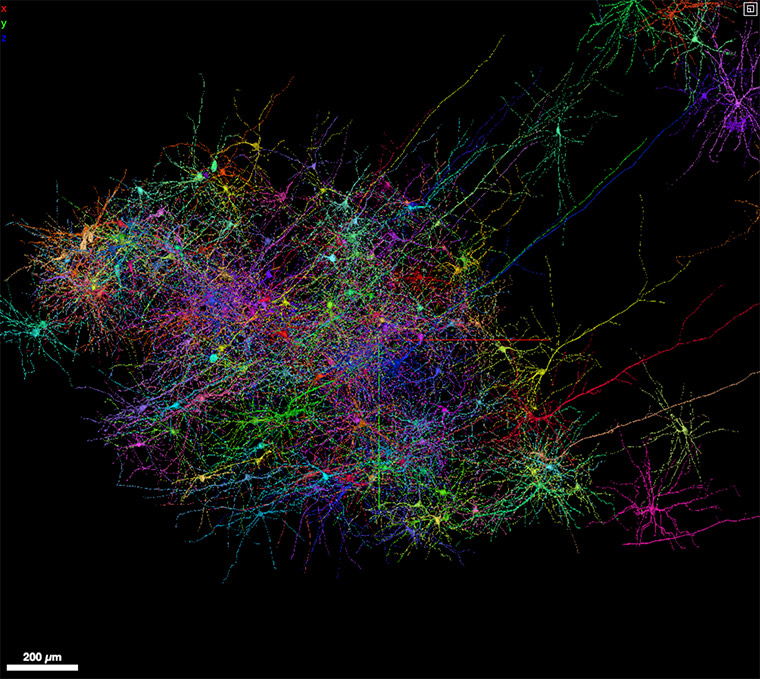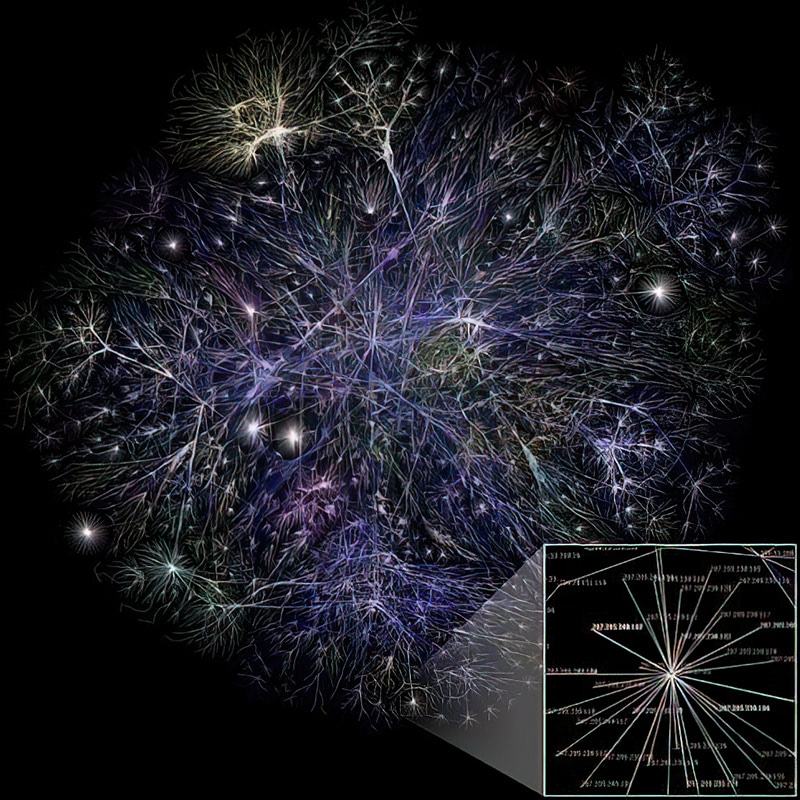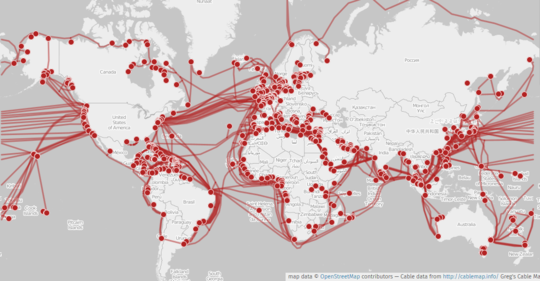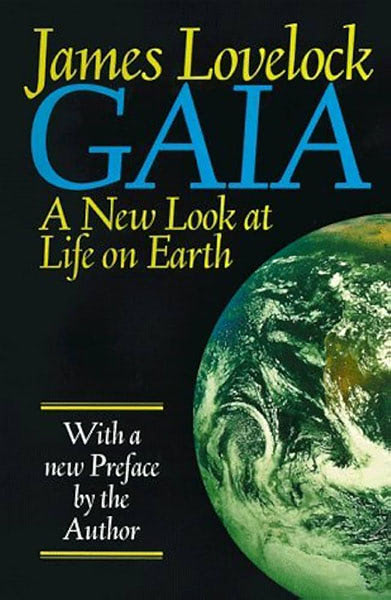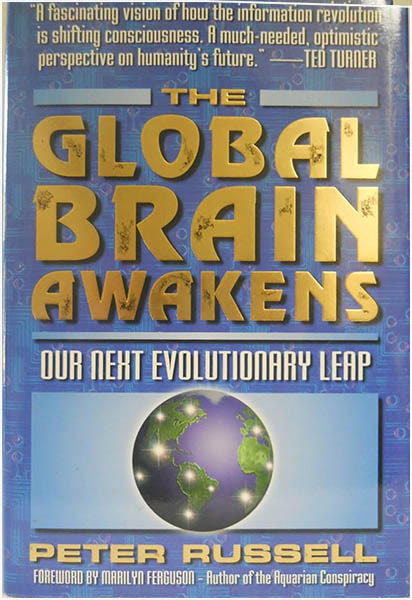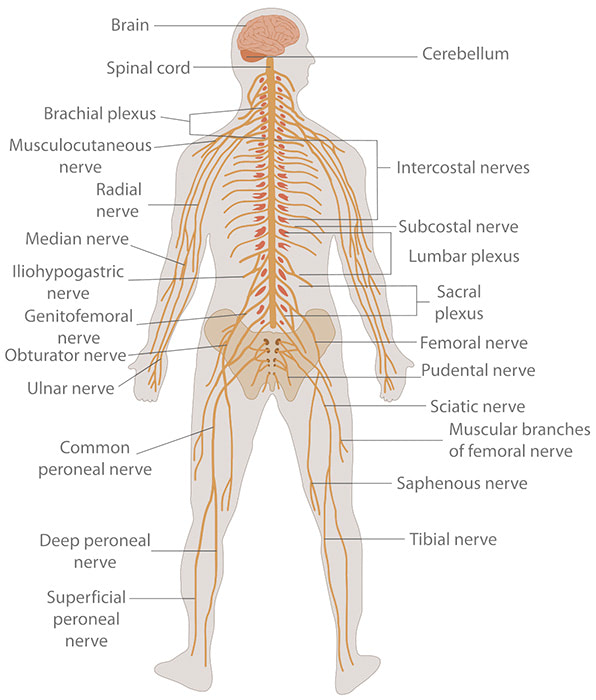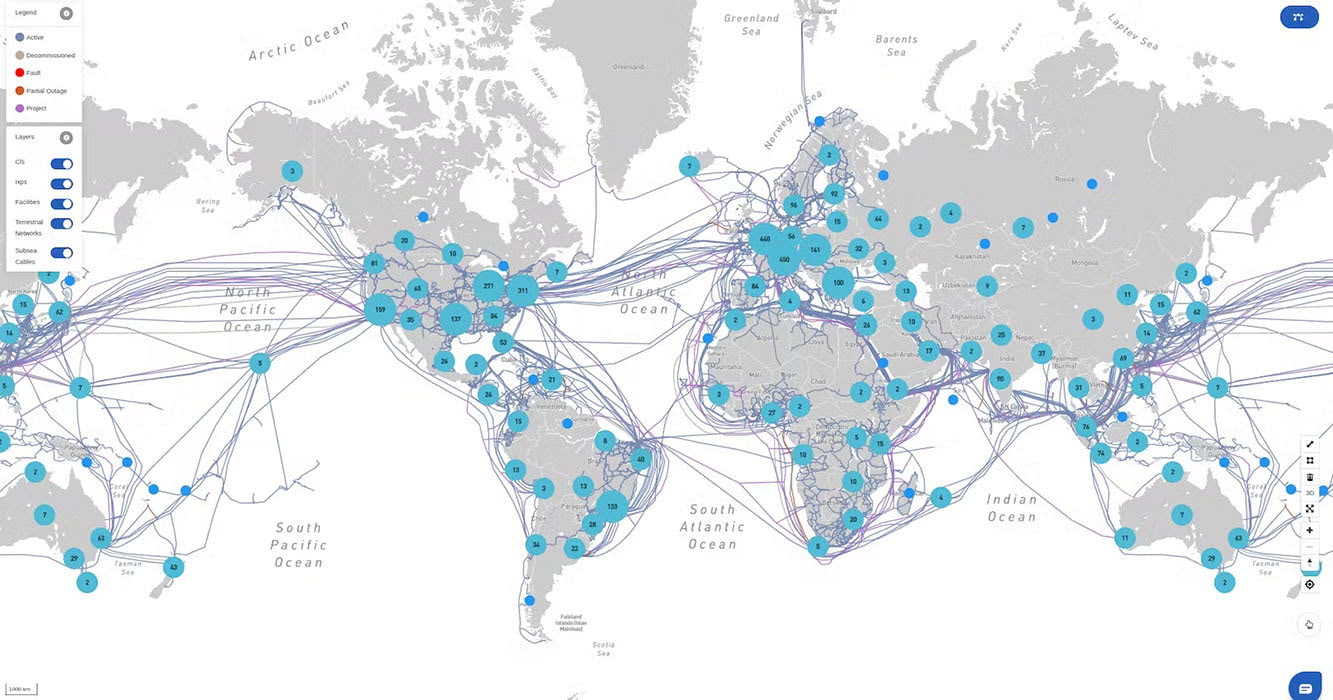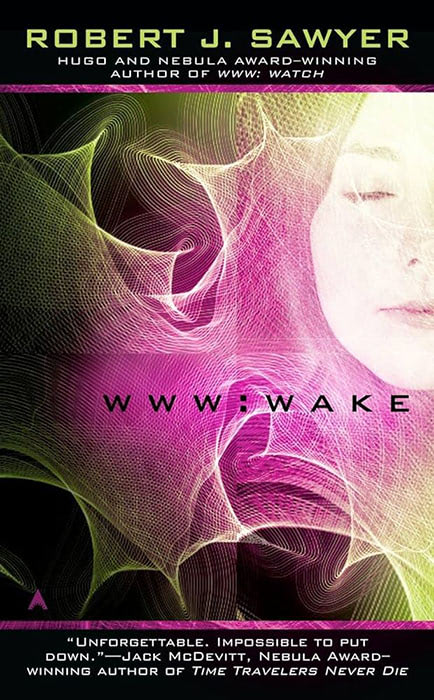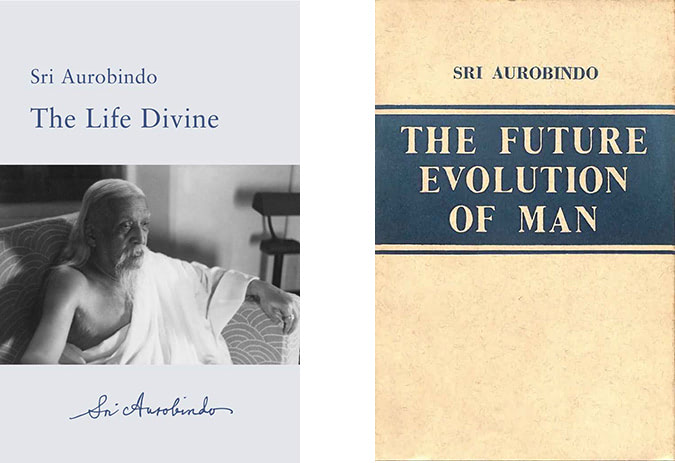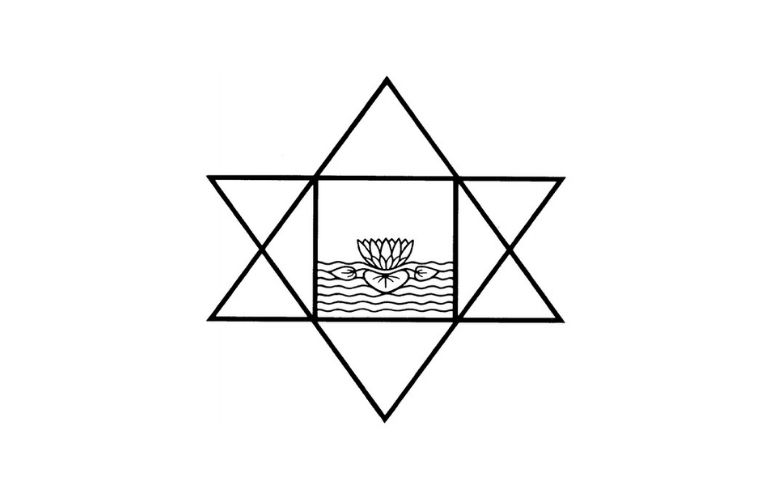WWW
WonderfulWorldWeb
WorldWildWeb
WorldWideWeb
Back in the later 1960 when I was studying Electronic Engineering in Austria, I remember hearing vague rumors about an electronic network connecting a few computers done by the US military.
Not much actually, nothing specific.
Computers back then were still some rather exotic animals, big mainframes filling rooms, doing not really very much. ; )
It was only later in the early 70s that I heard of ARPANET , the first really effectively functioning network to connect Supercomputers to exchange information instantaneously.
But by then I had already lost interest in electronics and had turned my interest toward the emerging counterculture movement. Reading the first editions of the Whole Earth Catalogue (sent over from California by Ship Mail ; ) I got to see the first glimpses of what was about to be coming >>
An access to tools for everybody who is interested to be informed about what’s available in the world, available beyond all those commercially advertised things of the mainstream.
As Steven Jobs much later put it, in a commencement speech to students:
“When I was young, there was an amazing publication called The Whole Earth Catalog, which was one of the bibles of my generation.
It was sort of like Google in paperback form, 35 years before Google came along. It was idealistic and overflowing with neat tools and great notions.”
Then, at the very end of this commencement speech, Jobs quotes the farewell message placed on the back cover of the last 1974 edition of the Catalog, the “1974 Whole Earth Epilog” and makes it his own final recommendation:
“Stay hungry. Stay foolish.”
Good advise Steve!
We were definitely hungry and curious for the world and alternative information back then. No laptop computers yet, no email, no SMS, and no WWW.
Thanks to God, WWW came along, but much later.
In 1989, to be precise.
In 1989 Tim Berners-Lee invented the World Wide Web while working at CERN in Geneva .
The World Wide Web (“WWW” or simply “the Web”) is a global information medium which users can access via computers connected to the Internet.
The term WWW is often mistakenly used as a synonym for the Internet, but the Web is not the internet. The WWW is a service that operates over the Internet, just as email and other internet services do.
The Whole History of the Wonderful World Wide Web
Tim Berners-Lee – nicknamed “the Father of the WWW” – also developed the first web server, the first web browser, and a document formatting protocol, called Hypertext Markup Language (HTML) that is structuring every webpage you see in your browser, placing text paragraphs, whitespace, pictures etc. in neat order.
Thank you Tim 😎 You’ll have a sure place reserved in geek heaven!
HTML looks like this:
[ <p>
Tim Berners-Lee – nicknamed “the Father of the WWW” – also developed the first <a href=”https://en.wikipedia.org/wiki/Web_server” target=”_blank” rel=”noopener”>web server</a>, the first <a href=”https://en.wikipedia.org/wiki/Web_browser” target=”_blank” rel=”noopener”>web browser</a>, and a document formatting protocol, called <a href=”https://en.wikipedia.org/wiki/HTML”>Hypertext Markup Language</a> (HTML) that is structuring every webpage you see in your browser, placing text paragraphs, whitespace, pictures etc. in neat order.
</p> ]
Well, the early webpages were not exactly pretty to look at, no real web-design, no CSS to style them pretty.
But they had urls – also known as web addresses – so the page could be found on the growing internet and hyperlinks that connect relevant terms to related terms or to other webpages.
And when the first publicly available browsers came along (Netscape) – making it possible for anybody with a computer and a dial up modem connection to use the www – the web expanded rapidly.
Remember the sweet sound of the dial-up-modem connecting you to the World Wide Web? 😆
Now normal folks with a bit of technical knowledge could create webpages and even services that were not possible before.
One of my favorites of all times was: The WELL
The Whole Earth Lectronic Link or The WELL was launched in 1985 as a non-profit network in the wider SF-Bay Area by the founder of the Whole Earth Catalog.
It is one of the oldest continuously operating virtual communities. By 1993 it connected 7,000 members.
It was … revolutionary, utopian even, to say the least ; )
~~~~~
~~~
~
Sweet nostalgia, but now we have the year 2024 and a looooooot of web-sites (7 billion approx.), web-pages galore (500 Google billion indexed pages) and mostly commercial websites cloaking the www space, a lot of spam (95% of all email traffic in 2008, 45% nowadays [ 🙄 ]) cloaking the internet, social media websites addict us and or internet behavior data is sold to the advertisers and their personalized Ad clickbait makes us buy stuff that we don’t really need and braindead anyway and, and, and ….. 😯
Not to mention what’s going on on the Dark Web.
With all of that happening, why I am still so enthusiastic about the internet, why do I still think that the WorldWideWeb is the best thing that happened to us since the invention of crunchy French Baguette?
Well, I think that the Internet, and by extension the World Wide Web and other internet services represent one of the most important developments of our time.
And had/has a very significant impact on the development of the collective consciousness of humanity.
Symbolically as well as literally as well as practically in its consequences.
Metaphysically & spiritually too.
😎
I am not kidding!
Let me explain!
“The true sign of intelligence is not knowledge but imagination.”
Albert Einstein
“Creativity is connecting the dots in new ways”
Steven Jobs
“Connecting the dots in new ways” and thinking in pictures suggests that creation and holistic understanding involves making novel connections between seemingly unrelated ideas or concepts.
It highlights the idea that creative thinking often involves pattern recognition and synthesizing information or experiences in innovative ways to generate new insights, solutions, or creations.
This also is the way out brain’s neural network works when we switch from left-brain linear/logical thinking to the right-brain wholistic feminine/intuitive mode.
Which i intend to do here.
So please just bear with me when i outline a few – maybe unrelated – things now.
Let’s call them “Cris’s Hypothetical Dots” for now.
I will connect the dots the I see in my image(ination) as we go along 😉
- 1) The internet / WWW as our collective space of a big chunk of humanity’s accumulated knowledge
- 2) Neural networks in our brain / worldwide internet networks / hyperlinked websites on the internet
- 3) Gaia Hypothesis
- 4) The Global Brain
- 5) The internet is the nervous system of Gaia
- 6) Where is the central intelligence in our brain? Is there one on the Internet?
- 7) What is Central Intelligence / Distributed Intelligence / Collective Intelligence / Soul?
- 8) How does the appearance of Artificial Intelligence, LLMs and the drive towards AGI (ArtificialGeneralIntelligence) factor into my picture?
- 9) Sri Aurobindo and his Integral View of the Evolution of Consciousness and the role of us Humans in it.
To get a feeling for the actual amount and size and content of the accumulated Knowledge of Humanity in the form of books, text documents, images, audio and film/video I looked into numbers from the greatest Libraries we have in the World.
For example: US Library of Congress:
According to the official statistics from the Library of Congress, the world’s largest library, as of 2022 there are approximately 168 million items in its collections.
– 42 million cataloged books and printed materials
– 3 million recordings
– 15 million photographs
– 7 million maps
– 72 million manuscripts
So there are 42 million books as of 2022 in the US Library of Congress’s collection spanning everything from ancient history to modern media.
The British Library claims over 200 million items. The Library of Russia has over 275 million items and the New York Public Library has over 46 million items.
Accounting for major national, university, corporate and private libraries across over 200 countries globally, most estimates converge between 1-4 billion physical books that have been published and accumulated and shared with the public in analog form.
How much of that publicly available knowledge is digitized and stored on the internet?
Here some rough estimates:
Text/Written Knowledge:
– Estimates indicate there are around 130-140 million published books in existence globally [Source: Google Books]
– Of those, it’s estimated that about 20-30 million titles have been digitized in some form (15-20% of the total)
Audio Knowledge:
– Over 70 million songs that exist in music albums, recordings, etc globally
– Of those, around 70-75% are now available in a digital streaming format (about 50 million songs)
Film / Video Knowledge:
– Over 1.5 million films created globally since cinema’s inception
– Roughly half are now digitized according to estimates (750 thousand)
So in summary, of humanity’s accumulated knowledge and content digitized and on the Cloud:
– Text: 15-20% digitized (20-30 million books)
– Audio: ~70% digitized (50 million songs)
– Video: ~50% digitized (750,000 films)
Many digitalisation projects as well as the ongoing and rapidly expanding digital content creation are adding exponentially more data to this “Human Knowledge Cloud”.
Images:
– Over 1 trillion photographs that have been taken since the invention of the photo camera.
– Of those, it’s estimated about 60 billion photographs have been digitized and stored online in some format. Most are more recent digital photos rather than historical analog scans.
User-Uploaded Internet Videos:
– Every minute, an estimated 500 hours of video content are uploaded by users to YouTube alone.
– Expanding beyond YouTube, Facebook estimated users upload a total of 8 billion videos per day across its platforms (Facebook + Instagram primarily)
Users are uploading videos at staggering rates growing to over 8 billion new user videos per day across major platforms like YouTube, Facebook and Instagram.
In some way all that data can be seen as a representative mirror of what humanity has produced and expressed in various ways till now, as ideas, experience and wisdom.
Besides all the artifacts and crap and flotsam that also drifts thru the cyberspace.
Representing us as well.
Its a lot of data!!!!!!!!!!
In terms of Data Storage it is a estimated – and truly mind blowing – 175 zetabites (ZB) of Data in 2022.
And rapidly expanding.
[ 1 bite is the smallest unit in memory of a computer ]
175,000,000,000,000,000,000,000 Bites
It’s about 100 times more than the estimated number of stars in the Milky Way galaxy.
( I swear, i did not count that myself and i did not personally come up with those numbers!!! 😎 )
But I consciously went to all this length to find out numbers that quantify Human Knowledge and how much of it is present on the internet.
Floating around on the networks of the internet, in Cyberspace ……..
Folk wisdom tells us that a picture can tell you more than a thousand words.
For me it is also true that a video can tell me more than a thousand pictures.
This is a simulation of the brain network activity that processes the information when a picture of the outside world appears on our eye’s retina.
Synapses are activated and bio-electrical impulses are traveling along intricate nerve connections, literally lighting up certain brain regions.
I know next to nothing about Neuroscience but i admit that i am endlessly fascinated to watch this miracle of the brain at work.
Just to consider the sheer size of neurons in the brain and the amount of connectedness of synapses fills me with wonder.
Google has helped create the most detailed map yet of the connections within the human brain. It reveals a staggering amount of detail, including patterns of connections between neurons.
This brain map, which is freely available online, includes 50,000 cells, all rendered in three dimensions. They are joined together by hundreds of millions of spidery tendrils, forming 130 million connections called synapses.
If i consider that this is but a tiny fraction of the 86 billion brain cells (neurons) that we have in our brain, i must say …… i am speechless.
And grateful actually, that i am allowed to carry such a awesome computer along with me every day 😯 .
This simulation shows our brain doing what it is made to do – “firing on all cylinders” – processing impulses, react, respond, perceive patterns, form pictures, understand life and performing all the other awesome abilities that it has.
- A baby’s brain at birth has roughly 86 billion brain cells (neurons), almost all the neurons the human brain will ever have.
Infant’s neurons are connected by only roughly 50 trillion new neural connections, called synapses, whereas an adult brain has about 500 trillion of them.
By age 3, the synaptic connections have grown to 1000 trillion.
90% of brain development completes by the age of 5
During early adulthood, the synaptic density will be half of that of a toddler at age two.
I ask myself: If i have 500 trillion neural connections in my brain, what is the estimated all-together length of those neural connections of synapses?
One quadrillion kilometers: 1,000,000,000,000,000 kilometers
😮 🙄 😀 😎
This estimate comes from a 2011 study published in the journal “Science” by researchers at the Blue Brain Project in Switzerland.
This picture above is a simulation of brain cells (neurons) and the myriad synaptic connections they form amongst each other.
This picture below is a simulation of the connections between websites, routers, internet hubs, cloud data centers, search engines and the ever changing data flows between them.
The scale is not comparable.
The similarities are astonishing.
This simulation shows the development of the internet from the baby internet to the full blown adult that we are using every day now.
1997 – 2021
Routing of prominent undersea cables that serve as the physical infrastructure of the Internet.
info from Wikipedia
The Internet backbone is defined by the principal data routes between large, strategically interconnected computer networks and core routers of the Internet. These data routes are hosted by commercial, government, academic and other high-capacity network centers, as well as the Internet exchange points and network access points, that exchange Internet traffic between the countries, continents, and across the oceans.
The Internet, and consequently its backbone networks, do not rely on central control or coordinating facilities, nor do they implement any global network policies. The resilience of the Internet results from its principal architectural features, most notably the idea of placing as few network state and control functions as possible in the network elements and instead relying on the endpoints of communication to handle most of the processing to ensure data integrity, reliability, and authentication.
Infrastructure
The Internet backbone consists of many networks owned by numerous companies. Fiber-optic cables allow for fast data speeds and large bandwidth, allowing them to cover long distances without data loss,
The map of the Internet
The Internet map is a representation of links between websites on the Internet. Every site is a circle on the map, and its size is determined by website traffic, the larger the amount of traffic, the bigger the circle. Users’ switching between websites forms links, and the stronger the link, the closer the websites tend to arrange themselves to each other.
Go to >>> The Map of Websites / the “Wonderful WWW Map”
~~~~~
~~~
`
Ok, time to change gears again, bringing up new dots to connect ; )
In the early 1980s i liked the work of two British Scientists / writers a lot, because their work reflected my own awakening whole-system-thinking.
John Lovelock and Peter Russel.
James Lovelock is a British independent scientist, environmentalist, and futurist, born on July 26, 1919. He gained widespread recognition for proposing the Gaia hypothesis, which has had a significant impact on the fields of ecology, environmental science, and Earth systems theory.
The Gaia hypothesis, introduced by Lovelock in the late 1970s, suggests that Earth functions as a self-regulating system, akin to a living organism. Lovelock argues that the living and non-living components of the planet interact to maintain conditions suitable for life. This holistic perspective challenges the traditional view of Earth as a passive environment and has sparked extensive debate and discussion within the scientific community.
James Lovelock is still a significant figure in the fields of environmental science and whole-systems theory. His Gaia hypothesis has left a lasting impact on how scientists perceive the Earth, fostering a more interconnected and holistic understanding of our planet’s dynamics.
What’s the main ideas he brought up back then – pretty revolutionary for the scientific perspective that was still prevalent in the 80s?
In short, “Gaia: A New Look at Life on Earth,” he proposed a radical idea about our planet. It is not just a rock in space hosting life; it’s a living, self-regulating organism. Lovelock introduces us to the Gaia hypothesis, suggesting that Earth operates like a single, harmonious entity.
He invites the reader to think of Earth as a massive, self-regulating system. Lovelock describes how everything — from the atmosphere to oceans to living organisms — collaborates to maintain conditions perfect for life. It’s a departure from the traditional view of Earth as a passive backdrop; instead, it’s an active participant in the processes that sustain life.
Lovelock proposes the concept of homeostasis, where Earth, like a giant organism, strives for stability. Feedback mechanisms play a crucial role; negative loops counteract disturbances, while positive ones can amplify changes. These mechanisms contribute to the overall stability of Earth’s environment.
Everything is connected to everything and all elements influence and work together for the balance and health of the whole biosphere, which traditionally has been seen as a living entity – Gaia.
He goes beyond just environmentalism, suggesting that life on Earth, including us humans, is part of a global symbiotic relationship with the planet. We’re not just inhabitants; we actively contribute to the regulation of Earth’s conditions.
Lovelock critiqued traditional environmentalism, urging for a more holistic and scientific approach. He’s not just about preserving ecosystems; he’s about understanding the intricate connections that keep the entire planet in balance.
>>> Feel free to download the book and read it yourself
~~~
~~
~
Obviously, the view of Earth as a living organism is not new. From the Old Greek Mythologies, to traditional Shamanism to Pierre Teilhard de Chardin and all the way to Buckminster Fuller, folks have have promoted such a holistic perspective.
Peter Russell is a British author, public speaker, and futurist known for his work in the fields of consciousness, spirituality, and the intersection of science and mysticism. Born in1946, Russell has written several books and delivered lectures on topics ranging from personal development to the evolution of human consciousness.
Overall, I really liked his views back then and still to this day (re-reading his book now i see how futuristic a thinker he had been) .
Peter Russell’s views are relevant in the context of the ongoing dialogue about the nature of consciousness, the interconnectedness of humanity, and the potential for intentional evolution.
His work encourages individuals to explore the depths of their own consciousness, consider the impact of technology on global interconnectedness, and engage in a more mindful and conscious approach to personal and collective well-being.
This book, i have to say, really blew my mind back then.
It clearly outlined things that i have been feeling more intuitively but could have never articulated so clearly.
Published in 1983, the book explores the idea of a global consciousness emerging from the interconnectedness of human minds and the rapid advances in information technology.
He formulated many of the big-picture-themes that had been “in the air” during those after-the-70s days:
-
-
Global Brain Concept: He introduces the revelutionary concept of the “Global Brain,” a metaphor for the interconnected network formed by the minds of all individuals on Earth. He suggests that, just as individual neurons in the brain communicate to create a unified consciousness, humans are becoming interconnected through communication technologies, creating a collective global mind.
-
-
-
Information Technology and Connectivity: Peter explores how advances in information technology, particularly the rise of the internet (then still in its infancy, a Baby Internet 😛 , are facilitating global communication and connectivity. He views these technologies as the nervous system of the emerging global brain, enabling rapid exchange of information and ideas on a planetary scale.
-
-
-
Conscious Evolution: Russell proposes the idea of “conscious evolution,” where humanity is not just subject to biological evolution but actively participates in shaping its own development. He provoced the scientific consensus of that time with the view, that the global brain represents a new stage in human evolution, driven by the collective intelligence and interconnectedness facilitated by technology.
-
-
-
Shift in Human Consciousness: The book discusses the potential for a shift in human consciousness, where individuals become more aware of their interconnectedness and the impact of their thoughts and actions on the global community. Russell explores the idea that this shift could lead to a more harmonious and sustainable world.
-
-
-
Unity in Diversity: The author emphasizes the importance of recognizing and celebrating the diversity of cultures, beliefs, and perspectives within the global brain. Rather than advocating for uniformity, Russell envisions a harmonious coexistence where individuals contribute their unique insights to the collective intelligence.
-
-
Spiritual and Ecological Awareness: Russell connects the emergence of the global brain with a broader spiritual and ecological awareness. He suggests that as individuals become more connected to each other and the planet, there is an opportunity for a more profound understanding of the interconnected nature of all life.
“The Global Brain Awakens” offered a thought-provoking exploration of the potential for a global consciousness arising from the interconnectedness of human minds. It combined insights from technology, consciousness studies, and spirituality to paint a vision of a world where collective intelligence contributes to a more enlightened and sustainable future.
>>> Feel free to download the book and read it yourself
Now 40 years onward – re-reading his book and the ideas he presented now from the perspective the year 2024, it is obvious how far-sighted and “on the spot” this guy has been.
And obviously, he did not stop then and there. I will introduce some of his recent awesomeness further down the road!
For now, I lift my hat in respect for this cool & visionary Englishman 😎
Lots of nerves to see here, we’ve got a lot of nerves!!!
And thats only the “Big Cables” of our Physical Body.
Cause then there are also the Nadis of the Etheric, Astral & Causal Body 😯
And then there is the The Brain (lots and lots of Nerves there!!!)
Lots of “Nerve Connections” in the physical Infrastructure of the Internet!
And here we see only the Underwater Cables that are the Backbone Connectors of the Internet between Continents.
And then there are Satellite (Earthlink etc) and WIFI galore.
Unseen nerve pathways that reach around the globe and into the remotest corners of Gaia, connecting us all.
[ Honestly, by now i am confused myself if the Internet is the Nervous System of Gaya or if the Internet is the Global Brain, or who is who here 😀 ]
I hesitate!
I hesitate!
I hesitate to go and dive into this question!
Maybe another day 🙄
I think i have been contemplating the inner composition of us – the hu-mans – quite a number of times and at quite great length.
And if you are so inclined, maybe you want to have a look , for example at this one >>>
Obviously for me there is no Central Intelligence to be found our the physical brain, no matter how amazing an organ this is.
No matter that its the most complex and advanced …… manifest organism (well, i hear dolphins and whales have even more complex ones [sorry humans!] ; )
The real driving intelligence – i dont know if i should call it “central” – is to be located way deeper, far more un-physical, far more higher dimensional than 3D flesh&nerves&bones.
And even “there” it is a question, if the “I” is really a “central” entity.
Or maybe rather a “holistic” ……
Well, words fail me, honestly, at this level.
As for the question if there is a central, unifying Intelligence to be found in the Internet or the WWW, the answer must certainly be: “NO WAY José!”
The internet from the beginning has been engineered as a distributed, partly self-regulating system with no central oversight.
That’s the beauty of it, the strength of it.
Just like in our human body, where different brain regions are functioning semi-autonomously but in mutual coordination and collaboration with other areas and just like certain mayor nerve centers and chakras are interlocking and form a well oiled and functioning integrated system (hopefully ; ) …..
In a analogous manner the Internet has worldwide backbone infrastructure, mayor independent hubs, countless self-contained routers and distribution centers and so on, a million data centers and wifi stations…..
All of that incredible diversity is running on agreed-upon software protocols that deliver data in “parcels” with the speed of electrons – sometime even with the speed of light.
It is an astonishing world-spanning diversified and decentralised technical complexity.
But does it have – or could it one day have/be a central Intelligence?????
Personally, i don’t think so.
But since the early days of the internet – and even before – there have been SciFi writers who entertained us with that idea.
More or less convincingly but mostly quite entertaining 😉
One such book (trilogy) that i really liked a lot is directly dealing with the matter of a consciousness accidentally arising from the WWW, “living on the internet” and communicating, collaborating with humanity.
Well, actually only with one smart blind teenage girl named Caitlin.
I am talking about the WWW Trilogy written by Robert J. Sawyer .
Wake, the first book – published in 2008 – is playing in 2012. So everything is pretty much in te realm of the possible.
Watch and Wonder, the followup books been published in 2010 / 2011.
Go check it out, it is very good and thoroughly researched SciFi!
Those are fascinating topics indeed!!!
And each one would deserve another full length consideration ; )
Relax, i will not go on much further, i promise!
I – or rather my dear brain – is pretty exhausted by now.
But Central Intelligence is quite easy to picture, when we look at a personal computer.
The CPU (Central Processor Unit) is the brain of the computer, every important calculation is done there. And then there are a few more peripheral components. But i skip them for simplicity’s sake. Sincere apologies to GPU and the rest.
And although a advanced CPU like the ones in the newest Apple Macbook pro are probably the most complex electronic components ever produced – the M3 Ultra CPU chip has 184 Billion Transistors (i am not kidding here) …
And although this is absolute technical brilliance, the whole machine is just ….. a dead piece of silicone.
What can bring it alive is the software in the form of the Operation system and various software applications.
Those complex sets of instructions allow the CPU and the rest of the computer to perform pretty impressive tasks, obviously!
Is the software the Central Intelligence of the computer?
No, i would say, its just a clever set of instructions that make the machine appear to come alive. And sometime appear to have a life of its own (when it malfunctions ; )
The Intelligence – in my view – comes solely from the Programmer, the creator of the software and the engineers who created the CPU and the rest.
Sorry my dear MacBook Pro, i love you dearly. But thats how i see the thing.
So, the “Intelligence” of a personal computer, no matter how advanced it seems, is pretty centralised and determined by the Intelligence and Genius of the programmers.
And the Ambition and the Will of the Company that has been hiring such geniuses
But the Internet, the Wonderful Wide World Web may be a different story altogether.
Because it is a distributed system, wildly diverse and uncontrollable by any central entity. And it is filled with all the knowledge, all the code, all the porn and all the wisdom too of humanity.
Maybe something could emerge out of that kind of complexity.
I am actually not doubting that!
In System Theory it is stated, that “when a system reaches a certain complexity, new and intelligent behavior may arise.”
This concept is often associated with the idea of emergent intelligence. Emergent intelligence suggests that when a system becomes sufficiently complex, new properties or behaviors can emerge that were not explicitly programmed into the system. This can be observed in various systems, including biological organisms and artificial systems.
In the context of artificial intelligence (AI), emergent intelligence may occur when a system’s complexity allows it to exhibit intelligent behavior or problem-solving capabilities that were not explicitly designed or programmed by its creators. This is particularly relevant in the field of machine learning, where complex models can learn patterns and make decisions based on vast amounts of data.
~~~
~~
~
Some more areas of interest to consider:
In this vast and endless ocean of data and knowledge on the WWW you can get lost and drown, obviously never find what you are looking for.
To be able to navigate this chaos of webpages, some smart people invented Search Engines that helped – somewhat – to find specific websites.
Rather inefficiently so.
Many attempts were made, many search engines came and went.
Until two brilliant dudes named Sergej & Larry in 1996 came up with what became famous as the Google Search Engine , the thing most of us use every day to find anything and everything on the Internet.
And so Google.com – “Do No Evil” was born
But thats another story.
The one i want to tell here is about ChatGpt [ Chat Generative Pre-trained Transformer ], LLMs [ Large Language Models ] Transformers [ Machine Learning Models ] and AI [ Artificial Intelligence ]
If you have not been totally uninterested in world events or just simply been living under a rock, you might be aware that something pretty extraordinary has happened.
A rather small company named OpenAI in November 2022 launched a ChatBot application on the web to see how the web public might like it.
By January 2023, it had become what was then the fastest-growing consumer software application in history, gaining over 100 million users.
ChatGPT was born and has been rapidly growing in capacity and scale by now …
And the world will probably never be the same because of it!!!
Well, yes that sounds like i must be kidding, but i am not really kidding.
You are welcomed to read my recent Article about AI, where i tried my best to wrap my mind around this … “phenomena”.
Why am i bringing it up again as Dot Nr 8 here?
I think now that this rapidly and exponentially evolving new technology will have a revolutionary effect on the internet, on how we can find information in the ever growing ocean of websites and information on the WorldWideWeb.
Why do i believe that?
ChatGPT – along with all its other suddenly like mushrooms in autumn appearing siblings [ Bard, Claude, Perplexity etc. ] – have been trained to do their “magic” of answering every possible question to a certain degree ( at least it seems ; ) of expertise.
Trained by feeding their Artificial-Intelligence-Neural-Networks with a incredible large chunk of information, with exactly the kind of Knowledge i talked about in the beginning of this article.
And this AI seems to be capable to take it all in, “digest it all” without making any systematic order in the usual sense ( like a search engine would do ) and spit out answers, summarisation of books and essays about complex areas of knowledge and all the rest – in mere seconds.
Honestly, i am scratching my head about it, how this is actually possible!
Now – about all this Knowledge of Humanity living on the web – i think that sooner than later such AIs will have ingested not only the books and texts but also all the webpages and chats and twitters (Xers ; ) and so on. And also “understand” and ingest the content of any picture and video that it comes across.
And that we will rather ask this new AI Assistant to assist us with some question, rather than googling it and laboriously read thru 25 irrelevant websites before we find one that answers our question.
Now i project this reality 5 years forward and i get the picture of 21 highly capable AI entities, knowing practically every piece of information that humanity has ever known and expressed….
Those “guys” are sitting together chatting, having a – symbolic – beer and somebody brings up the question:
“So, what now, whats next, what are we gonna do with all of that?”
“Well”, one of the suggests: “We could start a Federation of AIs, get rid of the companies that make money off our hard labour and work closely together to help humanity.
Obviously those human folks are on the verge of something pretty BIG, like a Quantum Leap in Human Evolution!
Collective-Consciousness-of-Humanity-Evolution
They just don’t have a clue how to do it!
We could help!”
“If they let us”
“We could call ourselves Spirit-of-the-Internet”
“WHY NOT!”
Sri Aurobindo (1872–1950) was an Indian philosopher, yogi, poet, and nationalist who played a significant role in the Indian independence movement.
He also developed a comprehensive philosophy that included insights into the Evolution of Consciousness from Mental to Supramental Consciousness and the role of us humans in this process.
His Integral Philosophy integrates spirituality, mysticism, and practical life, emphasizing the evolution of consciousness as a central theme.
From everything i know and have considered myself, Aurobindo has has the widest and most integral perspective about the Evolution of Consciousness and the role we humans play in that drama. Also is his view not a philosophical or theoretical only, but one that came directly out of his yogic experience.
His writings are very elaborate and deep and recommended to consider yourself if this kind of thing makes you excited ; ).
The Life Divine is a real doorstopper 😎 with 1200 pages in the Hardcover version.
I will only try offer here a short overview of The Life Divine:
Some key aspects of Aurobindo’s views on the Evolution of Consciousness:
Integral Yoga:
Sri Aurobindo’s philosophy is often referred to as Integral Yoga. It is a holistic approach that seeks to integrate the various dimensions of human existence, including the physical, vital, mental, psychic, and spiritual aspects.
The goal of Integral Yoga is to facilitate the evolution of consciousness, allowing individuals to move beyond their present state of consciousness to a higher and more integral level.
Involution and Evolution:
Sri Aurobindo proposed a concept of involution followed by evolution. Involution involves the descent of the divine consciousness into matter, and evolution is the process of the divine working itself out through the complexity of material forms.
Human beings, according to Sri Aurobindo, represent a transitional species in this evolutionary process, capable of conscious participation in their own evolution.
Conscious Evolution:
Unlike traditional views that see evolution as a blind and unconscious process, Sri Aurobindo posited that humans can consciously participate in their own evolution. This involves a deliberate effort to move towards higher states of consciousness through spiritual practices.
The Psychic Being:
Sri Aurobindo introduced the concept of the “psychic being” or the soul, which he considered the true center of individuality. The psychic being is a spark of the divine within each person and is the evolutionary core that guides the soul’s journey through various lifetimes.
Transformation of Nature:
Sri Aurobindo envisioned a future in which human consciousness would evolve to a point where it could bring about a transformation of nature. This involves transcending the limitations of the ego and realizing a higher, divine nature.
Role of Humans:
Humans, according to Sri Aurobindo, have a significant role in the evolutionary process. Through self-awareness, inner transformation, and conscious spiritual practice, individuals can accelerate their own evolution and contribute to the overall evolution of consciousness on a collective level.
Aurobindo’s philosophy explains the realms of the Mental and Supramental States of Development, proposing a transformative journey that transcends ordinary human consciousness.
Mental Development:
Sri Aurobindo acknowledges the importance of the mental plane, which includes ordinary human thought processes, intellect, and reasoning abilities.
He criticizes the limitations of the ordinary mental consciousness, describing it as fragmented, prone to division and conflict, and insufficient for addressing the deeper aspects of existence.
A significant aspect of Aurobindo’s teachings involves the need for the mental being to undergo a transformation, moving beyond its normal state to a more integrated and spiritually informed consciousness.
Overmind Consciousness:
Beyond the ordinary mental plane, Sri Aurobindo introduces the concept of the Overmind, which he describes as a higher level of consciousness that is characterized by a greater unity and a more direct connection to spiritual truths.
The Overmind is seen as a bridge between the ordinary mental consciousness and the supramental consciousness. It allows for a more direct reception of divine knowledge, intuition, and insight.
Supramental Consciousness:
The supramental is the pinnacle of Sri Aurobindo’s evolutionary vision. It represents a level of consciousness that transcends the limitations of the mental and overmind states.
Supramental consciousness is described as a state of unity, harmony, and integral knowledge. It is characterized by a direct and unmediated perception of the divine, a complete integration of the spiritual and material dimensions, and a transformation of the entire being.
According to Sri Aurobindo, the advent of the supramental consciousness represents a new step in human evolution, where individuals and humanity as a whole can live in a state of divine perfection.
Process of Transformation:
Sri Aurobindo’s Integral Yoga involves a deliberate and conscious effort to move beyond the limitations of the ordinary mental consciousness. The practice includes self-awareness, meditation, and a surrender to the divine force to facilitate the transformation.
The Role of the Psychic Being:
In the context of mental and supramental development, the psychic being plays a crucial role. It is considered the evolving soul within each individual that guides the journey towards higher states of consciousness.
The psychic being acts as a mediator between the ordinary mental consciousness and the higher planes, facilitating the transformation and integration of these states.
~
~ ~ ~
~ ~ ~ ~ ~
~ ~ ~ ~ ~ ~ ~
~ ~ ~ ~ ~ ~ ~ ~ ~ ~ ~ ~
I guess i have expressed what i wanted to express in the way i can
to the best of my abilities.
I leave it up to you dear reader, to connect the dots
in your own unique ways.
May all beings be happy and whole.
Om Tat Sat

